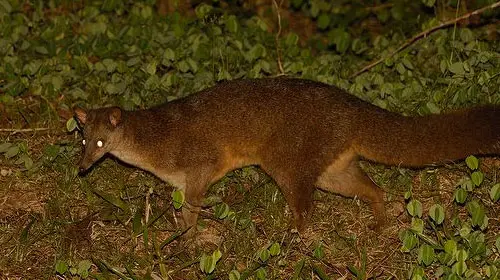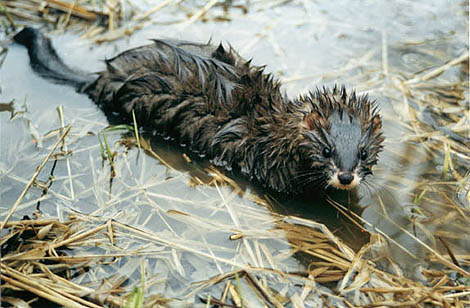Falanouc
The Falanouc is a mammal that is only found on the island of Madagascar and although fairly widespread the Falanouc is certainly a rare sight with an estimated 2500 left in the wild. This unusual looking mammal resembles a mongoose or civet and is currently classed as endangered due to habitat loss from the draining out marshes and deforestation.
There are 2 sub species of Falanouc on Madagascar with the eastern species running almost the entire length of inland Madagascar and the western species can be found in one habitat although they can be occasionally spotted in dry forest land. The preferred habitat of the Falanouc is that of damp and humid forests and marshland.
The Falanouc has a heavy built body that draws contrast to its narrow head and long muzzle. With both features of the mongoose and civet the Falanouc is covered in soft fur and sports a bushy tail made up of fine hairs. The coloration between the 2 sub species varies with the eastern species being primarily brown whereas the western specie’s females are more of a gray color.

Falanouc
The Falanouc has long claws on its feet and has teeth that resemble an insectivore, however after recent study is has been confirmed that the Falanouc is not an insectivore but rather a true carnivore.
The Falanouc are territorial and have 2 scent glands, one on the neck and one on the anus. Although primarily nocturnal the Falanouc have been spotted on occasion in the daytime however usually the daytime hours are spent sleeping in its burrow of in deep rock crevices for shelter. The long claws of the Falanouc are useful in digging up worms and even though it isn’t classed as an insectivore the Falanouc will feed on some insects and amphibians.
Family groups are an uncommon sight as individuals usually live alone. It is not known for sure whether the Falanouc hibernates throughout winter, this was the main belief however individuals have been seen active during the winter periods. The Falanouc mate between July and August with young being born usually between November and January. These young don’t take long to come into their own and usually become independent at around 9 weeks.


